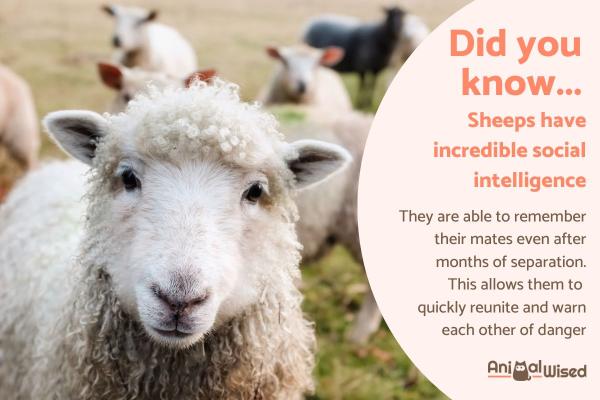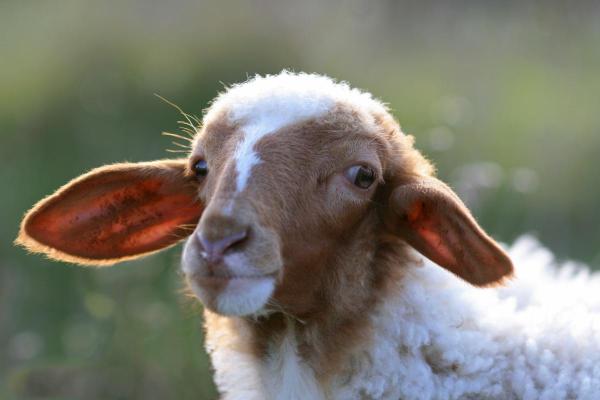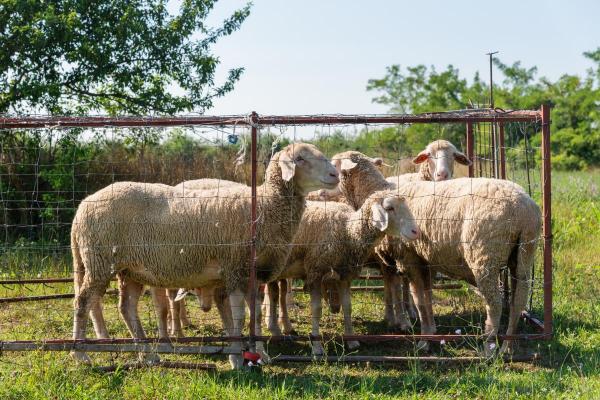Fun Facts About Sheep


Sheep are often stereotyped as simple, docile animals, but they're actually quite fascinating creatures. With a history dating back thousands of years, sheep have played an important role in human society, providing us with wool, meat, and milk. But there's much more to sheep than meets the eye. Sheep are highly social animals with a complex communication system. They can recognize each other by sight, sound, and smell, and they use a variety of vocalizations to communicate with each other. Sheep are also intelligent animals, capable of learning and adapting to new situations.
In this article, we'll explore some of the surprising fun facts of sheep. We'll learn about their social intelligence, sensory adaptations, vision, and intelligence.
- They are social creatures
- They have unexpectedly advanced facial recognition
- They have a wide field of vision
- They possess a remarkable hearing
- They have a remarkable memory
- They choose wise leaders
- They are excellent jumpers
- They have insulated coats
- They speak with bleats
- They exhibit collective imitation
They are social creatures
Sheep are inherently social creatures, thriving in tightly-knit flocks with remarkable organization. They possess the capacity to forge deep emotional connections with fellow flock members and can distinguish specific individuals.
Research has revealed that sheep have an impressive memory, enabling them to recognize their companions even after extended periods of separation. This social acumen is vital to their survival, facilitating the swift communication of potential threats and optimizing their foraging efforts. Additionally, when integrated into a new herd, sheep exhibit a remarkable ability to swiftly adapt to the established social norms of that particular group.
They have unexpectedly advanced facial recognition
Sheep are known for their social intelligence, but it may come as a surprise that they also have an impressive ability to recognize familiar human faces. Studies have shown that sheep can distinguish between different individuals and even exhibit preferences based on past interactions. This unexpected facial recognition skill highlights the surprisingly advanced level of visual intelligence possessed by these animals.
You might be interested in this other article where we discuss how sheep reproduce, their gestation period and birth.

They have a wide field of vision
Sheep have an exceptionally wide field of vision, spanning almost 300 degrees. This means that they can see nearly everything around them, except for what is directly behind them. This is because their eyes are located on the sides of their heads.
Their wide field of vision is a key adaptation for survival, allowing them to easily detect the presence of potential predators. It also plays an important role in their gregarious behavior. By having all-round vision, sheep can maintain visual contact with other members of the herd while grazing or moving together. This reinforces the social cohesion of the group and allows them to be attentive to the signals of their companions in case of danger or change in the direction of the herd.
They possess a remarkable hearing
Sheep have a remarkably sophisticated and sensitive auditory system, allowing them to detect sounds from considerable distances and identify potential dangers or threats. This acute sense of hearing provides them with a distinct advantage in their natural surroundings.
Their generously sized ears, which can move independently, facilitate their auditory prowess. These ears serve as highly effective sound receptors, enabling sheep to capture distant noises and pinpoint their source with remarkable precision.
This heightened auditory acuity is especially valuable for detecting the presence of potential predators and upholding communication within the flock. Sheep can discern and interpret the diverse vocalizations of their fellow conspecifics, fostering effective social interactions and group cohesion.
Curious about what sheep eat? Discover their diet and learn about the different foods that keep them healthy and thriving in this other article.

They have a remarkable memory
Sheep have an impressive memory that allows them to retain knowledge of events and familiar faces for extended durations. This remarkable capacity enables them to draw on past experiences, learning from their mistakes and adapting to shifts in their environment.
Their memory proficiency is a crucial survival tool, empowering sheep to navigate changing habitats and sustain efficient grazing patterns. In a world where climate change and other human-induced disturbances are rapidly altering ecosystems, sheep's ability to learn and adapt is essential for their long-term survival.
They choose wise leaders
Contrary to popular belief, sheep don't blindly follow a dominant leader. Instead, they're drawn to the most experienced and knowledgeable members of their flock. These leaders are typically older sheep who have demonstrated effective foraging strategies and an ability to evade threats.
This preference for experienced leaders is a survival strategy that benefits the entire flock. It underscores the importance of wisdom and practical knowledge in guiding a group to safety and sustenance.
Not all sheep have horns, but why? Discover the fascinating science behind sheep horns and learn about the different breeds that do and don't have them in this other article.

They are excellent jumpers
Sheep possess astonishing jumping capabilities thanks to their well-adapted physical structure. Their hind legs are endowed with remarkable strength and muscular power, while their supple spine affords them the agility required for graceful movements and effortless jumping.
This impressive jumping prowess equips sheep to navigate challenging terrain in their quest for sustenance and shelter, affording them a distinct edge over their natural predators. Sheep adeptly leap and scale obstacles, accessing grazing areas rich in vegetation and securing safe resting and shelter locations.
They have insulated coats
The dense woolly coat enveloping a sheep's body serves as an exceptional shield against the rigors of extreme cold. Wool is one of the most distinctive features of sheep and plays a pivotal role in their ability to withstand low temperatures.
Comprising fine, crimped fibers, wool assembles into an insulating layer that effectively entraps warm air in close proximity to the sheep's body. This air layer assumes the role of a thermal insulator, staunchly thwarting the dissipation of body heat and thereby sustaining a consistent internal temperature, even in the harshest cold conditions.
To an extent that breeds of sheep acclimated to frigid regions, like the Merino, boast especially thick and woolly wool, specifically adapted to confront the challenges posed by low temperatures.
Protect your flock from common sheep diseases. Learn about the causes and symptoms of the most common sheep diseases, and how to prevent and treat them, in this other article.
They speak with bleats
Sheep have a diverse range of vocalizations that they use to communicate with each other. Their most common vocalization is the bleat, which can convey a variety of messages depending on the context. For example, ewes use a distinct bleat to call their lambs, while a higher-pitched bleat may indicate distress or serve as a warning signal. Sheep also use other vocalizations, such as grunts, whistles, and honks, to communicate with each other.
Sheep's vocalizations play an important role in flock cohesion and survival. They allow sheep to stay in touch with each other, warn each other about danger, and find each other after being separated. Sheep's vocalizations are also important for social interactions, such as greeting each other and establishing dominance hierarchies.
Here are some specific examples of how sheep use their vocalizations to communicate:
- Ewes bleat to call their lambs: lambs can recognize their mother's bleat from a very young age. This helps to ensure that the lamb and ewe stay together and that the lamb is able to find its mother to nurse.
- Rams bleat to challenge each other for dominance: rams also use their vocalizations to attract ewes during mating season.
- Sheep bleat to warn each other about danger: if a sheep sees a predator, it will bleat to warn the other sheep in the flock. This gives theother sheep time to escape or prepare to defend themselves.
- Sheep bleat to greet each other and establish social bonds: sheep also use their vocalizations to express emotions, such as happiness, fear, and pain.
Sheep's vocalizations are a complex and fascinating form of communication. By understanding how sheep communicate, we can better understand their behavior and needs.
They exhibit collective imitation
The tendency of sheep to follow a leading individual when it moves in an unfamiliar direction is a fascinating phenomenon referred to as the "collective imitation effect." This behavior can cause the entire flock to trail behind a single leader, even when no apparent reason exists to do so.
This behavior may indeed be a survival strategy honed through evolution. By following the movements of other group members, sheep can collectively explore new territories, locate sources of food, and steer clear of potential hazards. In essence, this strategy enhances their chances of finding sustenance and safety, underscoring the adaptability and cooperation ingrained in their social dynamics.
Here are some specific benefits of the collective imitation effect:
- Exploration: sheep can collectively explore new territories with greater safety and efficiency by following a leading individual. This is because the leading individual is likely to have already assessed the risks and benefits of the new environment.
- Food finding: sheep can locate sources of food more easily by following a leading individual that has already found food. This is especially important in unfamiliar environments or when food is scarce.
- Predator avoidance: sheep can steer clear of potential hazards by following a leading individual that has already identified and avoided those hazards. This is especially important for avoiding predators and other dangerous situations.
The collective imitation effect is a remarkable example of how cooperation and social intelligence can enhance the survival of a group. It is also a reminder that even the most seemingly simple animals have complex and sophisticated behaviors.
Goats and sheep are close cousins, but they are not the same. Learn about the key differences between these two popular farm animals in this informative article.
If you want to read similar articles to Fun Facts About Sheep, we recommend you visit our Facts about the animal kingdom category.
- Kendrick, K.M., Atkins, K., Hinton, M.R., Broad, K.D., Fabre-Nys, C., & Keverne, B. (1995). Facial and vocal discrimination in sheep . Animal Behavior, 49(6), 1665-1676.
- Kendrick, K.M., Atkins, K., Hinton, M.R., Heavens, P., & Keverne, B. (1996). Are faces special for sheep? Evidence from facial and object discrimination learning tests showing effects of inversion and social familiarity . Behavioral processes, 38(1), 19-35.
- Piggins, D., & Phillips, C.J.C. (1996). The eye of the domesticated sheep with implications for vision . Animal Science, 62(2), 301-308.
- Risenhoover, K.L., & Bailey, J.A. (1985). Foraging ecology of mountain sheep: implications for habitat management . The Journal of Wildlife Management, 797-804.
- Sebe, F., Aubin, T., Boue, A., & Poindron, P. (2008). Mother–young vocal communication and acoustic recognition promote preferential nursing in sheep . Journal of Experimental Biology, 211(22), 3554-3562.
- Squires, V. R. (1975). Ecology and behavior of domestic sheep (Ovis aries): a review . Mammal Review, 5(2), 35-57.








